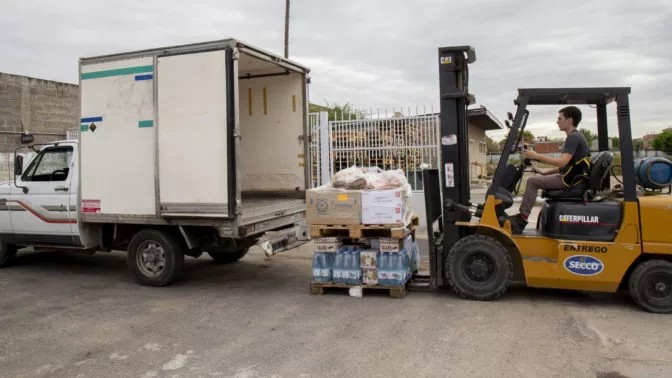Lesson of the Day: ‘Trucker Protests in Canada: What You Need to Know’
Lesson Overview
Featured Article: “Trucker Protests in Canada: What You Need to Know” by Azi Paybarah and Vivek Shankar
For several weeks, truck drivers protesting vaccine mandates have been parking their rigs to block the flow of traffic on major highways and bridges across Canada. On Feb. 14, Prime Minister Justin Trudeau declared a national public order emergency in an attempt to stop the blockades.
In this lesson, you will learn about how the protests started, the protesters’ demands and how the Canadian government has responded. Then, you will reflect on the article, analyze the signs, symbols and slogans associated with the movement, and learn more about how Canadians understand the demonstrations.
Warm-Up
Watch this three-minute video from PBS NewsHour to learn about the protests that have been taking place in Canada. Then, in your own words, summarize the who, what, where, how and why of the situation:
Who are the protesters?
What are they protesting?
Where are the protests taking place?
How are people protesting?
Why are these protests significant? In what ways are they affecting the rest of the country?
Questions for Writing and Discussion
Read the article, then answer the following questions:
1. How did the current protest movement begin? What prompted the truckers to take action?
2. Mr. Trudeau initially dismissed the protesters as a “small fringe minority.” What evidence supports that sentiment?
3. The article states that “the protesters are having an outsize impact for their small numbers.” What are some of the ways in which this movement has had an impact in Canada and beyond?
4. How have protesters raised money for their cause? Who has donated to them?
5. What is significant about the national public order emergency? What is the goal of this action?
6. Who are the leaders and organizers of the protests? What actions have they taken to control the messaging of the movement, and to support the protesters?
7. What do the protesters say they want? Why might this goal inspire similar demonstrations in other countries?
Going Further
Option 1: Reflect and connect.
What is your reaction to the protests in Canada? What do you think about Mr. Trudeau’s declaration of a national public emergency? Do you think it will help to stop the protests? Should it? Why or why not?
How do people feel about coronavirus health measures where you live? Have there been actions against mask requirements or vaccine mandates? Do you think that a movement, like the trucker protests in Canada, could happen where you live? Would you want it to? Why or why not?
Option 2: Look closely and analyze.
Take a few minutes to look more closely at the photos and captions in the featured article, this related article or the most recent updates.
Then, discuss the following questions with your classmates:
What do you notice about the photos? What story do they tell about the movement?
What signs, slogans and symbols do you see at the protests?
Do these images remind you of any that you have seen in the United States or in your country?
What do these photos tell you about the movement, and even about Canada itself?
What questions do you have about what these photos show?
If you want to go further, read “Baffled by the Chaos in Canada? So Are Canadians,” in which Catherine Porter writes about Canadians who are trying to make sense of the trucker protests. Then, consider these questions:
How do citizens, who are not part of the protest movement, feel about what is happening?
What are some of the reasons that Canadians might have adopted more American positions, slogans and viewpoints in the past two years?
Why is this being called a “myth-busting” moment? What are some of the Canadian myths that are being challenged because of the trucker protests?



Comments